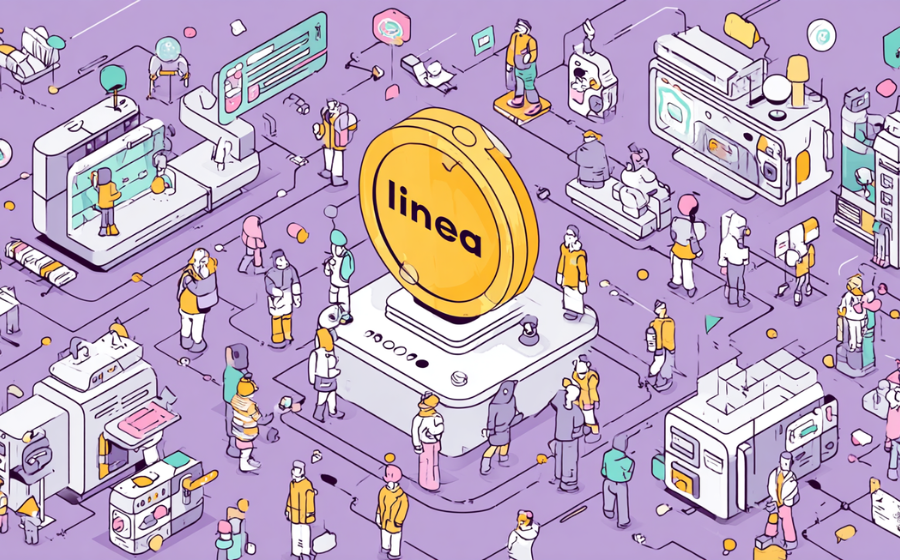
KEYTAKEAWAYS
- Rolling Pressure Mechanism: Binance Alpha's 15-day rolling points system creates continuous engagement pressure, transforming occasional users into daily active participants through loss aversion motivation.
- Strategic Involution Success: Despite DOOD project's $1,024 daily trading requirements causing user cost escalation, the controversy paradoxically drives explosive growth and market dominance.
- Volume Breakthrough Achievement: Rising participation thresholds filter casual users while committed participants generate $5 billion daily volume, securing Binance's commanding 95.3% market share position.

- KEY TAKEAWAYS
- THE 15-DAY ROLLING POINTS MECHANISM: ENGINEERED URGENCY
- AIRDROP THRESHOLD INVOLUTION: THE DOOD PROJECT CASE STUDY
- COST ESCALATION VERSUS REWARD COMPRESSION
- THE $5 BILLION BREAKTHROUGH: CONTROVERSY DRIVES VOLUME
- MARKET DOMINANCE THROUGH STRATEGIC INVOLUTION
- ECOSYSTEM FLYWHEEL EFFECTS: CONTROVERSY DRIVING GROWTH
- IMPLICATIONS FOR THE FUTURE OF WEB3 ENGAGEMENT
- DISCLAIMER
- WRITER’S INTRO
CONTENT
Binance Alpha’s 15-day rolling points system drives $5B daily volume despite rising costs. DOOD project requires $1,024 daily trading + $1,000 holdings, creating involution that achieves 95.3% market share.

Binance Alpha’s revolutionary 15-day rolling points system has fundamentally transformed Web3 user behavior, creating an unprecedented paradox in the cryptocurrency ecosystem. Despite generating significant controversy over escalating participation costs and narrowing profit margins, this gamified approach has propelled Binance Wallet to achieve a staggering $5 billion in single-day trading volume while capturing an extraordinary 95.3% market share. This phenomenon reveals how strategic involution costs can paradoxically drive ecosystem growth through powerful flywheel effects.
THE 15-DAY ROLLING POINTS MECHANISM: ENGINEERED URGENCY
Binance Alpha’s core innovation lies in its 15-day rolling points calculation system, which creates continuous pressure for user engagement. Unlike traditional loyalty programs with static accumulation periods, this dynamic timeframe ensures that user participation must be consistent and sustained to maintain competitive positioning for airdrop eligibility.
The rolling mechanism functions as a sophisticated behavioral modification tool, transforming occasional users into daily active participants. Users cannot simply accumulate points and remain dormant; they must continuously engage with the platform to prevent their scores from declining as older activities roll off the calculation window. This design creates what behavioral economists call “loss aversion motivation”—users work harder to prevent losing existing points than they would to gain new ones.
This temporal pressure fundamentally restructures how users approach Web3 participation, shifting from sporadic high-value transactions to consistent daily engagement patterns that generate more predictable revenue streams for the platform.
AIRDROP THRESHOLD INVOLUTION: THE DOOD PROJECT CASE STUDY
The DOOD project exemplifies how Binance Alpha’s points system has driven threshold involution to extreme levels. To qualify for the DOOD airdrop, users must maintain an average daily trading volume of $1,024 while holding a minimum of $1,000 in qualifying assets. These requirements represent a significant escalation from earlier projects and demonstrate how competitive dynamics within the points system drive ever-increasing participation costs.
This involution pattern creates a self-reinforcing cycle where each new project establishes higher participation barriers, forcing users to allocate increasing amounts of capital and time to maintain their competitive positions. The result is a dramatic increase in user participation costs—not for the platform, but for the users themselves. Participants find themselves caught in an escalating commitment spiral where participation costs grow faster than potential rewards.
However, this apparent inefficiency serves a crucial function within Binance’s ecosystem strategy. Higher participation thresholds naturally filter out casual users, creating a more committed user base willing to engage in sustained, high-value activities that drive platform metrics and revenue generation.
COST ESCALATION VERSUS REWARD COMPRESSION
The most controversial aspect of Binance Alpha’s system is the simultaneous increase in participation costs and compression of potential rewards. As threshold requirements rise with each new project, users must deploy larger amounts of capital while the relative scarcity of successful airdrops means individual reward expectations must be adjusted downward.
This dynamic creates what economists call “tournament economics”—a competitive structure where many participants incur costs, but only a select few receive significant rewards. While this might seem unsustainable from an individual user perspective, it generates enormous value for the platform through increased trading volume and capital deployment.
The psychological impact proves particularly significant. Users experience mounting pressure to increase their engagement levels to maintain their relative positions, even when rational analysis suggests that expected returns may not justify the additional investment. This behavioral pattern mirrors traditional gambling psychology, where fear of missing out drives continued participation despite diminishing odds.
THE $5 BILLION BREAKTHROUGH: CONTROVERSY DRIVES VOLUME
Despite widespread user complaints about rising costs and shrinking rewards, Binance Alpha’s points system has achieved remarkable market success. The platform’s single-day trading volume breakthrough of $5 billion represents a quantum leap in Web3 engagement levels, demonstrating the raw power of well-designed gamification systems to drive user behavior regardless of user satisfaction levels.
This trading volume explosion cannot be attributed solely to market conditions or organic user growth. Instead, it reflects the fundamental behavioral changes induced by the points system’s structure. Users who previously engaged in sporadic, large transactions now participate in daily trading activities to maintain their point accumulation rates. This shift from episodic to continuous engagement patterns has multiplied the platform’s transaction frequency while dramatically increasing overall user lifetime value.
The psychological anchoring effect of the 15-day rolling window creates urgency that translates directly into trading activity. Users cannot defer their engagement without consequences, leading to more consistent platform utilization and exponential revenue generation.
MARKET DOMINANCE THROUGH STRATEGIC INVOLUTION
Perhaps the most striking validation of Binance Alpha’s strategy is its achievement of 95.3% market share in the competitive Web3 wallet space. This near-monopolistic position demonstrates how strategic involution—deliberately increasing user costs to filter and commit participants—can create insurmountable competitive advantages.
The high participation thresholds serve as both barrier to entry for competitors and switching costs for existing users. Once users have invested significant capital and time into achieving competitive point totals, the opportunity cost of migrating to alternative platforms becomes prohibitively high. This creates powerful network effects that compound over time, making it increasingly difficult for competitors to attract users away from the Binance ecosystem.
ECOSYSTEM FLYWHEEL EFFECTS: CONTROVERSY DRIVING GROWTH
The apparent contradiction between user complaints and explosive growth reveals the sophisticated nature of Binance Alpha’s ecosystem flywheel. Controversy itself becomes a marketing mechanism, generating attention and discussion that drives platform awareness and user acquisition. Even users who criticize the system often continue participating, driven by fear of missing out on potential opportunities.
This controversy-driven engagement pattern creates multiple feedback loops that strengthen the platform’s position. Media coverage of rising thresholds and user frustrations paradoxically increases platform visibility, attracting new users curious about the opportunities that justify such high levels of engagement. Meanwhile, existing users’ investments in the system create sunk cost psychology that encourages continued participation despite mounting frustrations.
IMPLICATIONS FOR THE FUTURE OF WEB3 ENGAGEMENT
Binance Alpha’s success with involution-based user engagement suggests a new paradigm for Web3 platform design. Rather than competing solely on lower costs or higher rewards, platforms can achieve market dominance by creating sophisticated commitment mechanisms that increase user switching costs while generating superior engagement metrics.
This model challenges conventional wisdom about user-friendly design in favor of strategically complex systems that create deeper user investment and longer-term platform loyalty. The success metrics—$5 billion daily volume and 95.3% market share—provide compelling evidence that users will accept higher costs and increased complexity in exchange for access to exclusive opportunities and potential rewards.
The broader implications extend beyond any single platform, suggesting that successful Web3 ecosystems may increasingly rely on sophisticated psychological and economic mechanisms that create sustainable competitive advantages through strategic user behavior modification rather than simple feature competition.















